The Neuroscience of Public Speaking Anxiety
Public speaking anxiety is a common fear that affects up to 75% of people. This intense nervousness can hinder career advancement, limit personal growth, and negatively impact overall well-being. However, recent advances in neuroscience have shed light on the brain mechanisms underlying this anxiety, offering new and effective strategies to overcome it.
At MindLab Neuroscience, we understand the complex interplay between the brain and behavior. By applying cutting-edge neuroscientific insights, we can develop targeted interventions to reduce public speaking anxiety and boost confidence. In this article, we’ll explore 7 powerful neuroscience-based techniques to help you conquer your fear and become a more effective communicator.
My Story
As someone who once grappled with the paralyzing fear of public speaking, I intimately understand the challenges my clients face. I vividly remember the racing heart, sweaty palms, and overwhelming dread that used to consume me before stepping onto a stage or addressing a group. This personal struggle fueled my passion for neuroscience and led me to discover the brain-based techniques that not only transformed my own relationship with public speaking but now form the foundation of my coaching practice.In my journey from anxious speaker to confident communicator, I’ve learned that overcoming this fear is not about eliminating anxiety entirely, but rather about developing a new relationship with it. Through my work with clients, I’ve witnessed remarkable transformations as individuals learn to harness their nervous energy and channel it into powerful, engaging presentations.
My approach is deeply rooted in empathy and understanding. I know that each person’s experience with public speaking anxiety is unique, shaped by their personal history and neural patterns. That’s why I take the time to truly listen to my clients’ stories and tailor my techniques to their specific needs. Whether it’s helping a seasoned executive fine-tune their presentation skills or guiding a first-time speaker through their debut, I’m committed to providing a supportive, judgment-free space for growth and learning.While the techniques I use in my practice have been honed through years of experience and countless client success stories, I believe in empowering individuals with a variety of tools they can use on their own.
That’s why, in addition to sharing my personal approach, I’ve also compiled a list of other effective techniques that anyone can practice independently to tame their public speaking anxiety. Remember, the journey to confident public speaking is a personal one, and with the right tools and support, it’s a journey that anyone can undertake successfully.
My Personal Approach to Helping Clients Overcome Their Anxiety Related to Public Speaking
As a neuroscience coach dedicated to helping people overcome their fear of public speaking, I’ve seen firsthand the transformative power of brain-based techniques. My approach is deeply personal and tailored to each individual’s unique neural patterns and experiences. Through years of working with clients, I’ve developed a keen understanding of how anxiety manifests in the brain and body, and I use this knowledge to guide my clients towards lasting change. The techniques I employ are not just theoretical – they’re strategies I’ve refined through countless sessions, celebrating each small victory alongside my clients as they build confidence and skill.
While the methods I use in my practice are powerful, I believe in empowering individuals with a variety of tools they can use on their own. That’s why, in addition to sharing my personal approach, I’ve also compiled a list of other effective techniques that anyone can practice independently to tame their public speaking anxiety, which you will find below this section.
Overview of MindLAB’s Approach
- Cognitive reappraisal: Reframe anxiety as excitement. Research shows anxiety and excitement produce similar physiological responses, so relabeling anxious feelings as excitement can reduce anxiety and improve performance.
- Controlled breathing exercises: Deep, slow breathing activates the vagus nerve and parasympathetic nervous system, counteracting the fight-or-flight response associated with anxiety.
- Visualization and mental rehearsal: Mentally practicing a successful presentation activates similar neural pathways as physical practice, strengthening neural connections associated with confident public speaking.
- Exposure therapy: Gradual exposure to public speaking situations can desensitize the brain’s fear response over time by leveraging neuroplasticity.
- Power posing: Adopting confident body language for just two minutes before speaking can increase testosterone and decrease cortisol levels, boosting confidence.
- Mindfulness meditation: Regular practice reduces amygdala activity and increases connectivity between the amygdala and prefrontal cortex, improving emotional regulation.
- Virtual reality training: AI-enhanced VR systems like PresentationPro can provide a safe, repeatable environment to practice public speaking and reduce anxiety through simulated audience interactions.
- Embodied strategies: Programs like Corp-Oral focus on channeling anxiety through body control exercises and visualization techniques, leading to greater action awareness and improved self-perception of anxiety states.
Over the past two decades, the techniques I listed have had phenomenal success for everyone of my clients. I feel and have always felt that understanding brain function is such a powerful tool to directly target the neural mechanisms underlying public speaking anxiety. By consistently applying these strategies, my public speakers can rewire their brains to approach public speaking with more confidence and ease. Please read below to learn some ways to try out yourself.
1. Reframe Anxiety as Excitement: The Power of Cognitive Reappraisal
One of the most effective neuroscience-based techniques for managing public speaking anxiety is cognitive reappraisal. This strategy involves consciously changing how you interpret physiological arousal.
The Science Behind It
Research has shown that anxiety and excitement produce similar physiological responses in the body. Both states activate the sympathetic nervous system, increasing heart rate and releasing adrenaline. The key difference lies in how the brain interprets these sensations.
How to Apply It
When you feel anxious about public speaking, try relabeling those sensations as excitement. Instead of thinking, “I’m so nervous,” tell yourself, “I’m excited about this opportunity.” This simple shift can significantly reduce anxiety and improve performance.

Neuroscience Insight
Cognitive reappraisal activates the prefrontal cortex, which helps regulate emotional responses. By consistently practicing this technique, you can strengthen neural pathways associated with positive interpretations of arousal, making it easier to manage public speaking anxiety over time.
2. Harness the Power of Visualization: Mental Rehearsal for Success
Visualization is a powerful tool used by athletes, performers, and public speakers to enhance their skills and reduce anxiety. By mentally rehearsing a successful presentation, you can prepare your brain for the real event.
The Science Behind It
Neuroscience research has shown that mental practice activates similar neural pathways as physical practice. This phenomenon, known as “functional equivalence,” allows you to strengthen neural connections associated with successful public speaking without actually being on stage.
How to Apply It
Spend 10-15 minutes each day visualizing yourself giving a confident, engaging presentation. Imagine every detail, from the clothes you’re wearing to the positive reactions of your audience. Engage all your senses to make the visualization as vivid as possible.
Neuroscience Insight
Visualization activates the motor cortex, premotor cortex, and supplementary motor area – regions involved in movement planning and execution. Regular practice can enhance neural plasticity, making it easier to access these “success patterns” during actual public speaking events.
3. Breathe Your Way to Calm: The Vagus Nerve Connection
Controlled breathing exercises are a simple yet powerful way to reduce public speaking anxiety. By leveraging the connection between breath and the nervous system, you can quickly shift your body into a calmer state.
The Science Behind It
Deep, slow breathing activates the vagus nerve, which plays a crucial role in regulating the parasympathetic nervous system. This “rest and digest” system counteracts the fight-or-flight response associated with anxiety.
How to Apply It
Practice the 4-7-8 breathing technique: Inhale for 4 seconds, hold for 7 seconds, and exhale for 8 seconds. Repeat this cycle 4-5 times before and during your presentation to maintain a sense of calm.
Neuroscience Insight
Slow breathing increases heart rate variability (HRV), a measure of the variation in time between heartbeats. Higher HRV is associated with better emotional regulation and resilience to stress, making it easier to manage public speaking anxiety.
4. Embrace Exposure Therapy: Rewiring Your Brain’s Fear Response
Gradual exposure to public speaking situations can help desensitize your brain to the fear response, making it easier to manage anxiety over time.
The Science Behind It
Exposure therapy works by activating the brain’s natural neuroplasticity – its ability to form new neural connections. Through repeated exposure, you can weaken the association between public speaking and fear while strengthening pathways related to confidence and competence.
How to Apply It
Start with low-stakes speaking opportunities, such as presenting to a small group of friends or joining a local Toastmasters club. Gradually increase the challenge level as you become more comfortable.
Neuroscience Insight
Exposure therapy targets the amygdala, the brain’s fear center. Over time, this practice can reduce amygdala activation in response to public speaking cues, leading to decreased anxiety and improved performance.
5. Leverage the Power of Power Posing: Body Language and Confidence
Your body language doesn’t just reflect your emotional state – it can also influence it. By adopting confident postures, you can actually boost your feelings of confidence and reduce anxiety.
The Science Behind It
Research has shown that adopting expansive, “high-power” poses for just two minutes can increase testosterone levels and decrease cortisol (the stress hormone). This hormonal shift can lead to increased feelings of confidence and reduced anxiety.
How to Apply It
Before your presentation, find a private space and spend two minutes in a power pose. Stand tall with your feet shoulder-width apart, hands on your hips, and chin slightly raised. Alternatively, sit with your arms behind your head and feet up on a desk.
Neuroscience Insight
Power posing affects the hypothalamic-pituitary-adrenal (HPA) axis, which regulates stress responses. By modulating this system, you can create a more favorable hormonal environment for confident public speaking.

6. Harness the Mozart Effect: Music for Cognitive Enhancement
Listening to certain types of music before public speaking can enhance cognitive function and reduce anxiety.
The Science Behind It
The “Mozart Effect” refers to the temporary improvement in spatial-temporal reasoning after listening to classical music. While the specific effects on public speaking are still being studied, research suggests that music can reduce stress and improve cognitive performance.
How to Apply It
Listen to classical music, particularly Mozart’s sonatas, for 10-15 minutes before your presentation. Choose pieces with a tempo of about 60 beats per minute, which has been shown to induce an alpha state in the brain associated with relaxation and focus.
Neuroscience Insight
Music activates multiple brain regions, including the auditory cortex, motor cortex, and limbic system. This widespread activation can help prime your brain for better cognitive performance and emotional regulation during public speaking.
7. Cultivate Mindfulness: Present-Moment Awareness for Anxiety Reduction
Mindfulness meditation is a powerful tool for reducing public speaking anxiety by training your brain to focus on the present moment rather than anxious thoughts about the future.
The Science Behind It
Regular mindfulness practice has been shown to reduce activity in the amygdala and increase connectivity between the amygdala and prefrontal cortex. This leads to improved emotional regulation and decreased anxiety.
How to Apply It
Develop a daily mindfulness practice of 10-15 minutes. Focus on your breath or bodily sensations, gently redirecting your attention when your mind wanders. Before public speaking, take a few minutes to ground yourself in the present moment using these techniques.
Neuroscience Insight
Mindfulness meditation increases gray matter density in brain regions associated with learning, memory, and emotional regulation. This structural change can lead to long-term improvements in managing public speaking anxiety.
Rewiring Your Brain for Public Speaking Success
Public speaking anxiety doesn’t have to hold you back. By applying these neuroscience-based techniques, you can rewire your brain to approach public speaking with confidence and ease. Remember, change takes time and consistent practice. Be understanding with yourself and celebrate small victories along the way.
At MindLab Neuroscience, we’re committed to helping you unlock your full potential through evidence-based, brain-focused strategies. By understanding and leveraging the power of your brain, you can overcome public speaking anxiety and become a more effective, confident communicator. Start implementing these techniques today, and watch as your relationship with public speaking transforms. Your brain has an incredible capacity for change – it’s time to harness that power and step into your full potential as a speaker.





